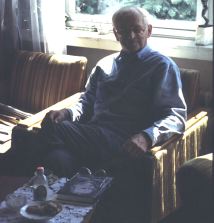
Copyright © 1997 by Margaret Peaslee.
(This article, and the photographs that accompany it, are available exclusively at MendelWeb, for non-commercial educational use only, and appear with the kind permission of the author. Although you are welcome to download this text, please do not reproduce it or the photographs without the author's permission.)
MendelWeb Note: The current standard of the Hypertext Markup Language (HTML) does not support many of the special characters used in the spelling of Czech names. Those with knowledge of Czech will notice that several letters in the names in this article are missing "hooks" and acute accent marks (e.g. when the accented letter is not an English vowel). We very much hope that HTML will evolve to include these special characters, and this text will be updated as soon as that evolution occurs; in the meantime, we apologize for the typographical inaccuracies. Finally, it was necessary to format the images that accompany this article as large .jpg files (each full-size image is approximately 1MB when decompressed), and we apologize to those whose connections and/or computers make viewing such images difficult or impossible).
Nearly every general biology textbook introduces its chapter on Mendelian genetics with a paragraph or two about Gregor Johann Mendel, that extraordinary monk who quietly revolutionized biologists' views of heredity. Some texts are rather unflattering and describe him as a stocky, good-natured putterer who failed in his attempts to earn a teaching certificate, but was somehow fortunate enough to stumble upon the garden pea as an experimental subject. Others are more generous with their background and their praise. As a young man growing up on a farm in northern Moravia, a province in Austrian Silesia later incorporated into Czechoslovakia, Mendel acquired an interest in agricultural plants and animals and impressed his teachers with his unusual intelligence and enthusiasm for learning. At that time the only route to higher education for a peasant farm lad, regardless of ability, was through the Church, and thus Mendel entered the Augustinian monastery in Brno. Brno (German: Brünn) was an important center of culture and scientific study for the country, and the members of the Augustinian Monastery, many of them teachers, furnished a stimulating environment for his developing intellect. Mendel's theoretical education in physics and mathematics along with his training in natural science provided a foundation for his breeding experiments with Pisum, and the application of probability theory and statistical analysis to the results of these crosses was radically innovative. Mendel's description of units of heredity, later expanded by others into the First and Second Laws of Heredity, and the Laws of Segregation and Independent Assortment, and his coining of the concepts of dominant, recessive, and discrete factors (later called genes) are included in his legacy (Orel 1984).
Apart from traditional knowledge, though, there are other concerns and little-known facts that add to our appreciation and understanding of Mendel. In planning a trip to the Czech Republic, the birthplace of my four grandparents, I began to wonder: "What is there to be found there of Mendel? Who remembers him, and why?" Traditional travel literature was of no assistance. The Real Guide (1991), an excellent source for much other useful information, devoted only a paragraph to the Augustinian Monastery on Mendlovo námestí (Mendel Square) in its section on Brno, but there is barely mention of the famous monk, to whom a room is dedicated "in the small anthropological museum housed in the monastery." A good map of the city revealed the location of the Památník (Memorial to) G. Mendel, but nothing prepares the biological pilgrim for the excitement of this discovery.
Two people who have focused much of their attention upon the life and work of Gregor Johann Mendel are Dr. Anna Matalová, Head of the Mendelianum Museum Moraviae at Brno, and Dr. Vítezslav Orel, Emeritus Head of the Mendelianum. Making use of the collection of Mendel's papers in the library and archives of the Augustinian Monastery and the Mendelianum, these scientific historians have written a significant number of scholarly works that reveal much of Mendel's background and education and the basis for his experimental design (Orel and Matalová 1983, Orel 1984), while also countering some of the criticisms heaped upon him through the years (Hartl and Orel 1992, Orel and Hartl 1994).
Retired and living in the lovely Brno home he calls the Eagles' Nest ("orel" is the Czech word for eagle), Dr. Vítezslav Orel (Figure 1) modestly provided me with references to an article (Orel and Hartl 1994) and a book (Orel 1996) he has recently completed about Mendel. What Dr. Orel did not reveal was the fact that he has actually published several books (Orel and Matalová 1983, Orel 1984, Orel 1996) and many scientific articles, recording the history of genetics, the contributions of Mendel, the contributions and persecution of Jaroslav Krízenecky (Orel and Matalová 1990, Orel 1992), and the friendship between Mendel and Francis Matthias Klácel (Orel 1972).

The Mendelianum: As the visitor approaches Mendlovo námestí, the church of the Assumption of the Virgin Mary, because of its size, is the dominant feature of the landscape; but it is the monastery (Figures 2 and 3), the courtyard, and the museum, the Mendelianum, which radiate the pride felt for this accomplished native son. In the courtyard stands the statue of Mendel erected in 1910 by the Friends of Science. Nearby is the well from which Mendel collected data on the height of the water table, one aspect of Mendel's extensive physical and meteorological observations. Just outside the door to the Mendelianum is a small garden (Figure 4), a representation of Mendel's with rows labeled P(1), F(1), F(2), etc., planted one season with begonias, the next with petunias. Peas, apparently, do not make good landscape plants.
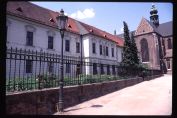
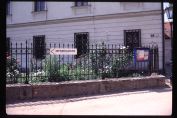
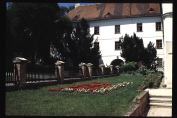
On one wall of the entry room into the Mendelianum is a diagram of Mendel's scientific predecessors and the quotation attributed to Pasteur, "NÁHODA PREJE POUZE PRIPRAVENYM" ("Chance favors only the prepared [mind]"). Dr. Anna Matalová, the current director, very knowledgeable and, obviously, a devotee of Mendel, can tell you some intimate details of the history of the monastery, and about Mendel and his contemporaries. She describes how Mendel's discoveries were a logical extension of his farming childhood, and are in perfect harmony with the Church's philosophy. Dr. Matalová is the author of Mendelianum: Guide to the Exhibit on Gregor Mendel's Life and Work in the Refectory of the Augustinian Monastery in Brno (1990), a richly illustrated and highly informative booklet describing the contents of each exhibit in the Mendelianum. This guide can be purchased at the entryway in many languages (Czech, English, German, etc.).
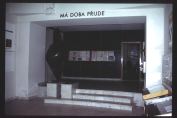
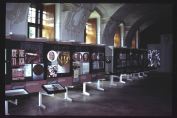
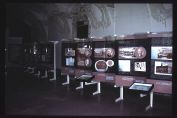
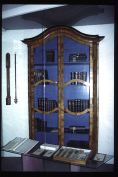
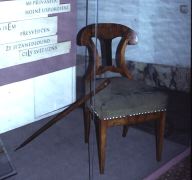

The exhibits at the Mendelianum (Figures 5-9) consist of photographs, books, notebooks, manuscripts, awards, and artifacts of this famous life. Dr. Matalová can add bits of personal color that make the experience especially fascinating. She knows details of the deep friendship between Mendel and F.M. Klácel, how at the 1868 election for the position of abbot of the monastery Mendel received all but one vote, and that vote, presumably Mendel's, went to Klácel. She can also persuade the Augustinians to allow a few visitors into the library of the monastery, its walls lined with richly ornate bookcases from 1740 (Samek 1993) and its ceiling decorated with frescos of Mendel's experimental plants and abbatical coat of arms.
A sight familiar to most biologists is found in the meeting room adjoining the exhibit -- Mendel's abbatical portrait (Figure 10). Another display in the room jolts the visitor -- names of scientists punished and persecuted during the Lysenko era (Figure 11). During this period science was subordinated to ideology as biologists were coerced into acceptance of the dogma of inheritance of acquired characteristics, ascribed to by Trofim D. Lysenko and his followers in the USSR (Orel 1992).
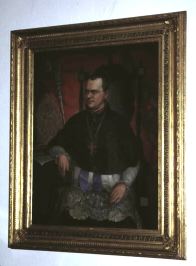
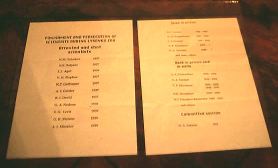
The Brno Modern School: Dr. Matalová can also direct the visitor to No. 22 Jánská Street where a plaque on the wall of the Technical College (Figure 12) states that this was the location in which Mendel delivered his now famous lectures, later published as Versuche über die Pflanzen-Hybriden, to the Brno Natural Science Society in February and March of 1865. Mendel spent 14 years (1854-1868) as a teacher of physics and natural history here.
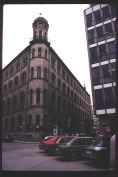
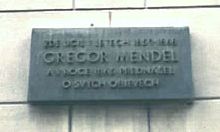
The Mendel Family Home: Mendel's birthplace in the town of Hyncice (German: Heinzendorf) is mentioned in the Guide to the Mendelianum (Matalová 1990). Tourists coming to the area in search of the Mendel family home are quickly provided with directions to Hyncice nad Odrou (meaning: "Hyncice in the valley of the Odra River") by the friendly, helpful citizens of the town. Hyncice residents immediately recognize visitors and surmise that their quest is directed toward Gregor Johann Mendel. Several interesting sites can be found in Hyncice. One is a plaque over the entrance to an unoccupied, official-looking building (Figure 13), which turns out to be the village fire station, originally equipped through a donation of 3,000 guilders from Abbot Mendel (Orel 1984). A group of elderly gentlemen relaxing outside the town's general store catch our attention as we drive by in our small blue Opel, as they call out, "Mendel? Mendel?" They point to a tile-roofed home about 100 yards away -- the Mendel family home (Figure 14), now maintained as a state museum. Entry to the museum is provided by the woman running the store -- she closes it temporarily while assuming her roles of ticket agent and docent. Displayed in the home are Mendel's family tree, photographs, awards, and other mementos.
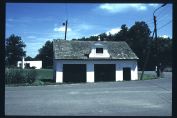
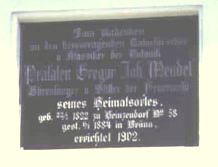
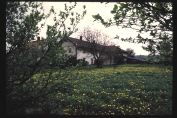

Brno Central Cemetery: In the exhibit hall of the Mendelianum we had found a reference to Mendel's burial in an Augustinian tomb in the central cemetery in Brno. The intrepid traveler can pull out that map of Brno to determine the location of the central cemetery and set off on another excursion. No map of the cemetery is available; however, with characteristic helpfulness gardeners and visitors steer you in the right direction. A translation of the plaque (Figure 15) near Mendel's grave (Figure 16) reads, "Scientist and biologist, in charge of the Augustinian monastery in Old Brno. He discovered the laws of heredity in plants and animals. His knowledge provides a permanent scientific basis for recent progress in genetics."
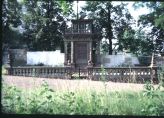
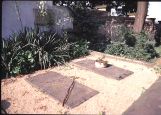
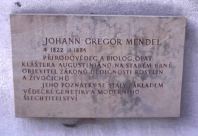
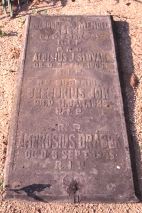
An interesting parallel emerges as one follows the progress of the science of genetics through the writings of Dr. Orel: a parallel between the history of genetics and the recent history of the Czech Lands. In both groups one finds fiercely independent people, confident that their ideas have been logically derived and would stand the test of reason and scientific experimentation. Both were suppressed either by idealogues who denounced the classical genetics of Morgan and Mendel in favor of Lysenko's "Michurin biology," the inheritance of acquired characteristics, or by those who would replace democracy, first with Nazi Fascism, then Communist Totalitarianism. Absent for a time were the free exchange of information, unrestricted travel, and self-determination through the democratic process. Careers were destroyed, freedom was sacrificed, lives were lost. In 1966 the Czechoslovak Government Order Number 59 put an end to the destructive era of Lysenkoism; the election of former dissident Václav Havel as President of the Czech and Slovak Federal Republic in 1989 opened the possibility of democratic development. The peaceful transition in 1993 to two independent states, the Czech Republic and the Slovak Republic is mirrored by the free exchange of dialogue between Dr. Orel and Mendel critics like Olby (1979), Edwards (1986), and Di Trocchio (1991).
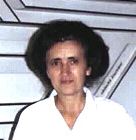
In answer to the questions posed at the beginning of this article: yes, there is much evidence that Moravia in the Czech Republic recognizes the contributions of Gregor Johann Mendel. Evidence can be found in both Brno and Hyncice. In the personages of Anna Matalová (Figure 17) and Vítezslav Orel, we find lives devoted to the study of Mendel's contributions at work this very day. The journey proved to be a biologist/photographer's dream (see Figures 18-24 below) and promised the opportunity for further investigation.
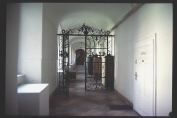


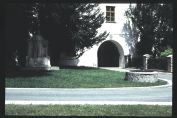
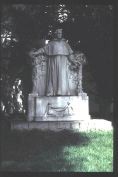

Edwards, A.W.F. "Are Mendel's results really too close?" Biol. Rev. 61:295-312 (1986).
Hartl, D.L. and V. Orel. "What did Gregor Mendel think he discovered?" Genetics, 131:245-253 (1992).
Humphreys, R. Czechoslovakia: The Real Guide. (New York: Prentice Hall, 1991).
Matalová, A. Mendelianum: Guide to the Exhibit on Gregor Mendel's Life and Work in the Refectory of the Augustinian Monastery in Brno (Brno: Moravian Museum, 1990).
Olby, R. "Mendel, no Mendelian?" Hist. Sci., 17:53-72 (1979).
Orel, V. "Mendel's elder friar and teacher, Matthew Klácel (1808-1882)." Quart. Rev. Biol., 47:435-436 (1972).
Orel, V. Mendel (New York: Oxford University Press, 1984).
Orel, V. "Jaroslav Krízenecky (1896-1964), tragic victim of Lysenkoism in Czechoslovakia." Quart. Rev. Biol., 67, 4:487-494 (1992).
Orel, V. Gregor Mendel--The first geneticist (New York: Oxford University Press, 1996). The second chapter from this book, "Heredity Before Mendel", is available at MendelWeb.
Orel, V. and D.L. Hartl. "Controversies in the interpretation of Mendel's discovery." Hist. Phil. Life Sci., 16:423-464 (1994).
Orel, V. and A. Matalová, (eds.) Gregor Mendel and the Foundation of Genetics (Brno: Mendelianum of the Moravian Museum, 1983).
Orel, V. and A. Matalová. Krízeneckého chápání Mendelova objevu pod vlivem teorie dedicnosti získanych vlastností (in English: Krízenecky's understanding of Mendel's discovery under the influence of the theory of heredity of acquired characters). Dejiny ved a techniky, Prague, 23:79-91 (1990).
Samek, B. The Monastery of Augustinians in Brno. Augustinian Monastery, Brno Old Town Abbey with cooperation of Institute for Protection of Monuments in Brno (1993).
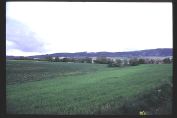
(This article, and the photographs that accompany it, are available exclusively at MendelWeb, for non-commercial educational use only, and appear with the kind permission of the author. Although you are welcome to download this text, please do not reproduce it or the photographs without the author's permission.)